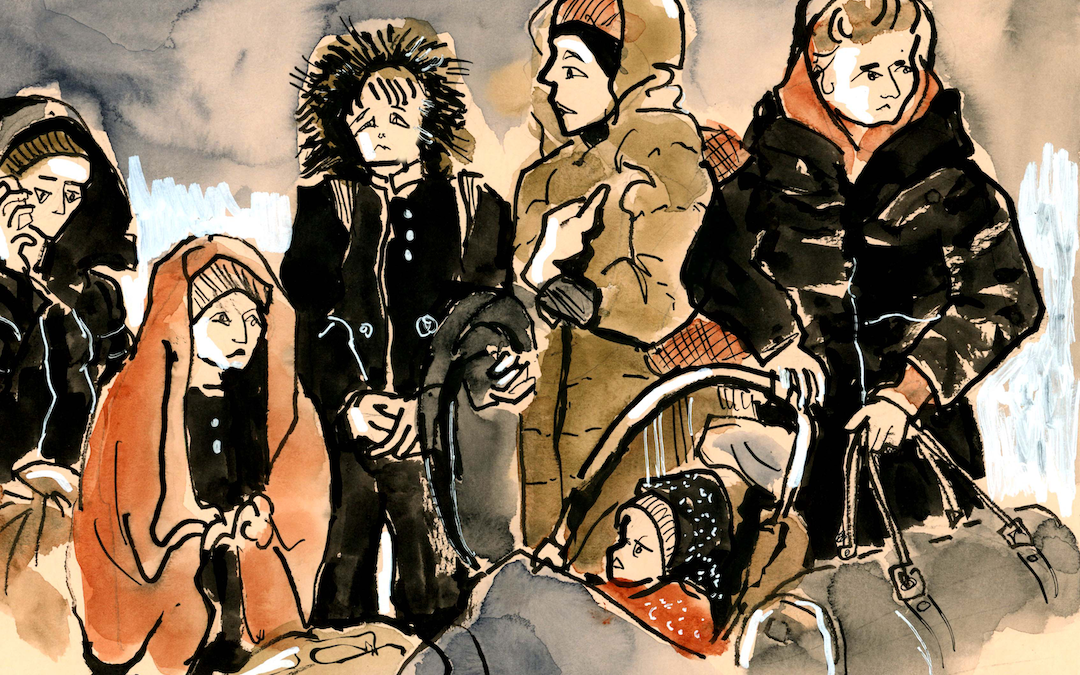How do we depict the lives of migrants? As they appear in news broadcasts, magazine covers, and documentary subjects, refugees express the vivid precarity of their movement. Sprawled across territories, standing together in camps, or facing yet another difficult passage in their journey, a refugee’s movement reflects the imperative constant of their condition. The representation of their movement, however, may also serve the political purpose of providing grounds for the so-called debate of what “should be done” with these displaced people. In reactionary spheres, these representations transform refugees into mobs or hordes that devour local communities. Those concerned with a more compassionate approach, though, render their subjects with empathy in portraits, interviews, and a detailed retellings of their long journey, written as an affected act of “humanizing the Other.”
Janet Biehl’s watercolors depict the life of migration as it appears across distinct geopolitical crises. The Ukrainians, Moldovans, and Yemenis in these images distinguish themselves through dress, gestures, and space, yet beyond these, the watercolors communicate in each instance the emotive composition of the migrants’ form. The disarrayed lines and groupings signal at once the isolating assemblage of strangers: the distinct hardships that have brought them together and the subsequent fortunes or misfortunes that will drive their future. Elsewhere, the groupings indicate the familial relations that huddle and collect these persons together. The eyes, above all, cast the expectations of the journey to come: staring down in attendance, looking out in expectation, or imagining at what cost one’s situation could be transformed. In an experience that is measured by no clear indicators of success—at what point does a migrant understand their journey to be over?—maintaining a belief in finding a new opportunity must be valued above all else.
Why is the concept of intent central to the viewing of Biehl’s watercolors? Where the subjects are otherwise displayed for the mere political purpose of communicating their audiences’ personal feelings regarding migrants—decided, in this case, on exclusion or an affected empathy—the images center their focus on the embodied spirit of the migrants in their journey. Biehl, in discussing her choice of medium, remarks that, “watercolors fill in the emotion.” Biehl’s art offers the experience of migration without the pretensions of the viewer, but as an approach to the volatile state of migration.
—José Alfredo O.A., Visual Art Editor
Janet Biehl
Janet Biehl is a writer, artist and editor born in Cincinnati, Ohio. After majoring in Theater at Wesleyan University, she pursued her M.A. in Liberal Studies at CUNY Graduate Center. Biehl has published works related to social ecology and became later involved in the Kurdish Freedom Movement as a writer, activist, and translator. Biehl’s artistic publications include Their Blood Got Mixed: Revolutionary Rojava and the War on ISIS.


















